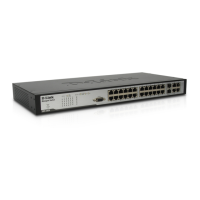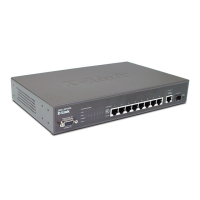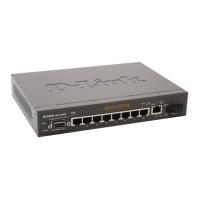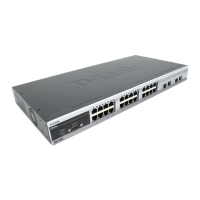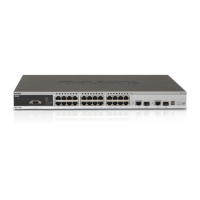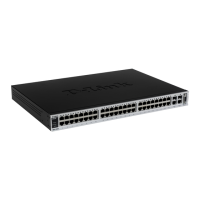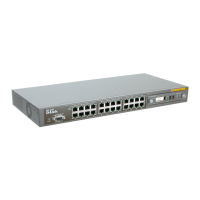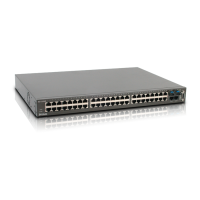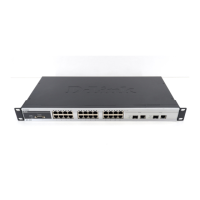DES-3028 DES-3028P DES-3052 DES-3052P Layer 2 Fast Ethernet Managed Switch
•
•
0 (auto) - Setting 0 for the external cost will automatically set the speed
for forwarding packets to the specified port(s) in the list for optimal
efficiency. Default port cost: 100Mbps port = 200000. Gigabit port =
20000.
value 1-2000000 - Define a value between 1 and 2000000 to determine
the external cost. The lower the number, the greater the probability the
port will be chosen to forward packets.
Hello Time
This can be set from 1 to 10 seconds. This is the interval between two
transmissions of BPDU packets sent by the Root Bridge to tell all other switches
that it is indeed the Root Bridge.
Migrate
Setting this parameter as Yes will set the ports to send out BPDU packets to other
bridges, requesting information on their STP setting If the Switch is configured for
RSTP, the port will be capable to migrate from 802.1d STP to 802.1w RSTP.
Migration should be set as yes on ports connected to network stations or segments
that are capable of being upgraded to 802.1w RSTP on all or some portion of the
segment.
Edge
Choosing the True parameter designates the port as an edge port. Edge ports
cannot create loops, however an edge port can lose edge port status if a topology
change creates a potential for a loop. An edge port normally should not receive
BPDU packets. If a BPDU packet is received, it automatically loses edge port
status. Choosing the False parameter indicates that the port does not have edge
port status.
P2P
Choosing the True parameter indicates a point-to-point (P2P) shared link. P2P ports
are similar to edge ports, however they are restricted in that a P2P port must
operate in full-duplex. Like edge ports, P2P ports transition to a forwarding state
rapidly thus benefiting from RSTP. A p2p value of false indicates that the port
cannot have p2p status. Auto allows the port to have p2p status whenever possible
and operate as if the p2p status were true. If the port cannot maintain this status,
(for example if the port is forced to half-duplex operation) the p2p status changes to
operate as if the p2p value were False. The default setting for this parameter is
True.
BPDU
This field can be Enabled or Disabled. When Enabled, it allows the forwarding of
STP BPDU packets from other network devices. The default is Enabled.
LBD
Use the pull-down menu to enable or disable the loop-back detection function on
the Switch for the ports configured above. For more information on this function, see
the STP LoopBack Prevention section.
Click Apply to implement changes made.
MST Configuration Identification
The following windows in the MST Configuration Identification section allow the user to configure a MSTI instance on the
Switch. These settings will uniquely identify a multiple spanning tree instance set on the Switch. The Switch initially possesses
one CIST or Common Internal Spanning Tree of which the user may modify the parameters for but cannot change the MSTI ID
for, and cannot be deleted. To view the MST Configuration Identification window, click L2 Features > Spanning Tree > MST
Configuration Identification:
94

